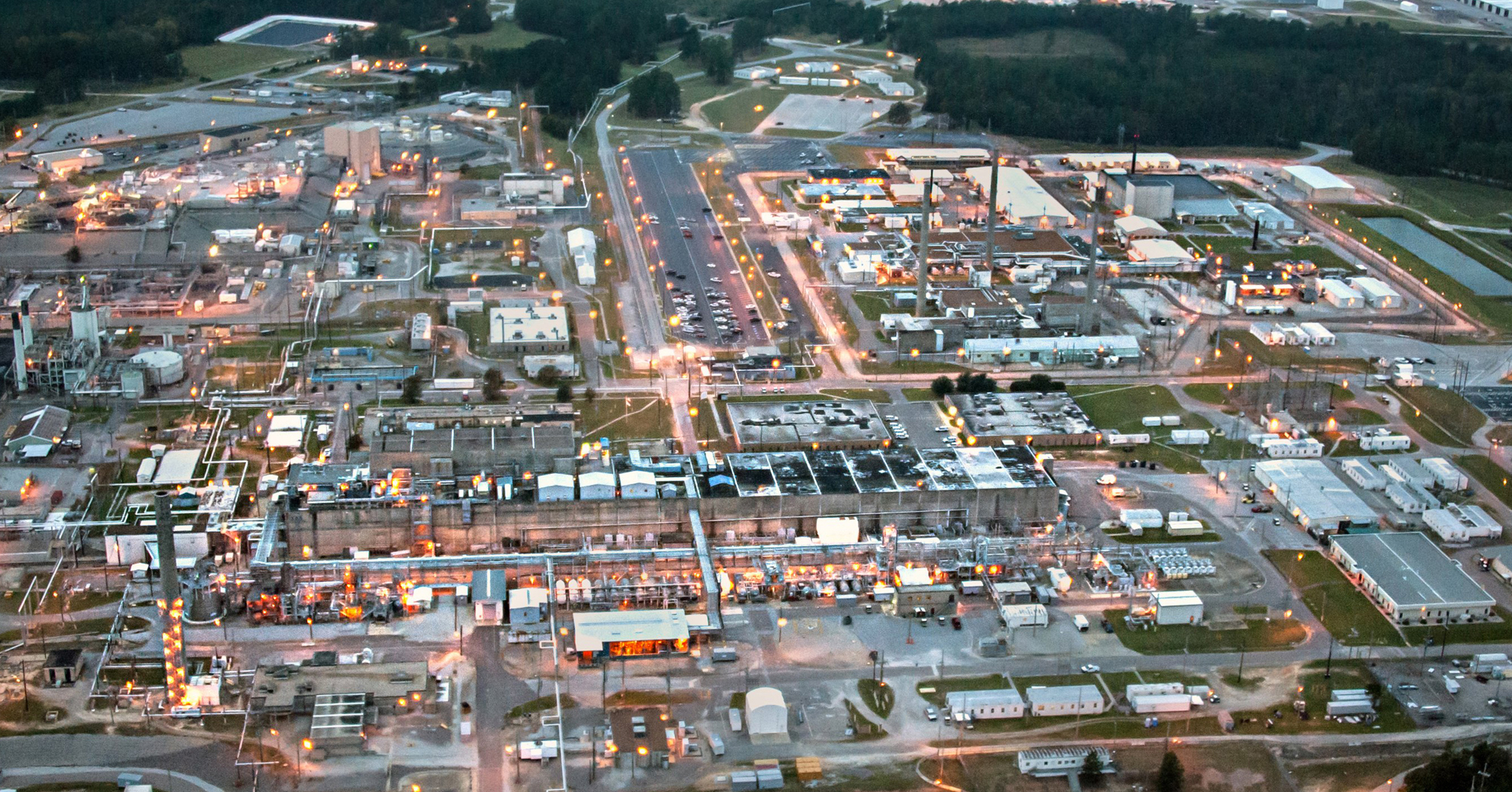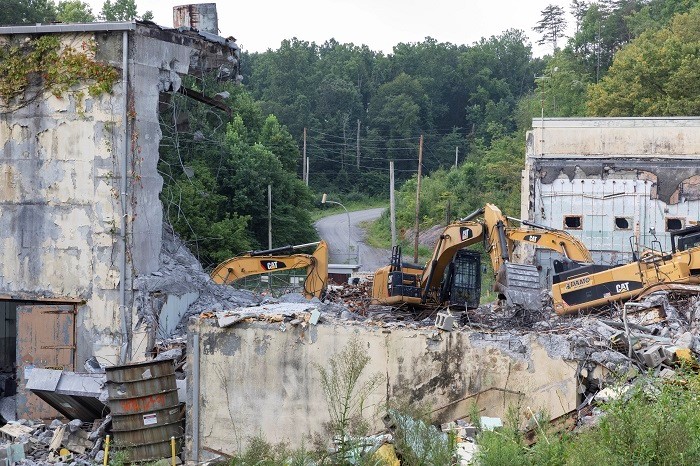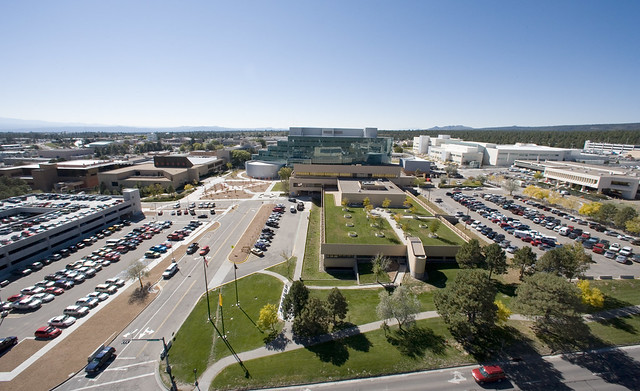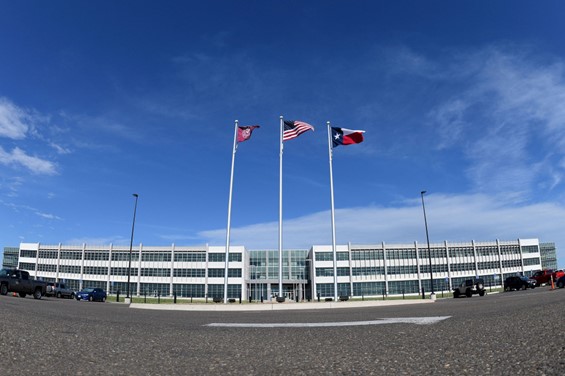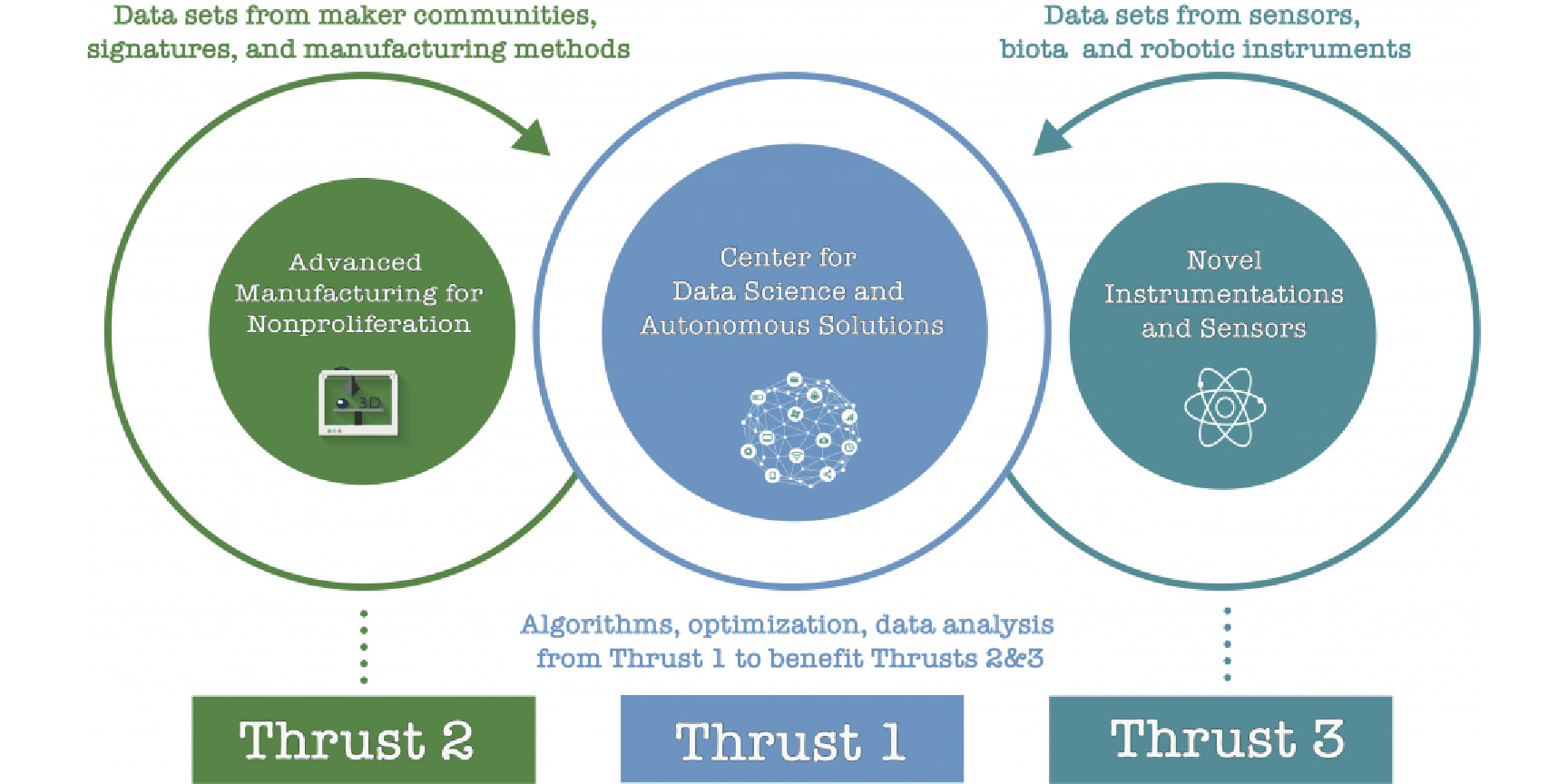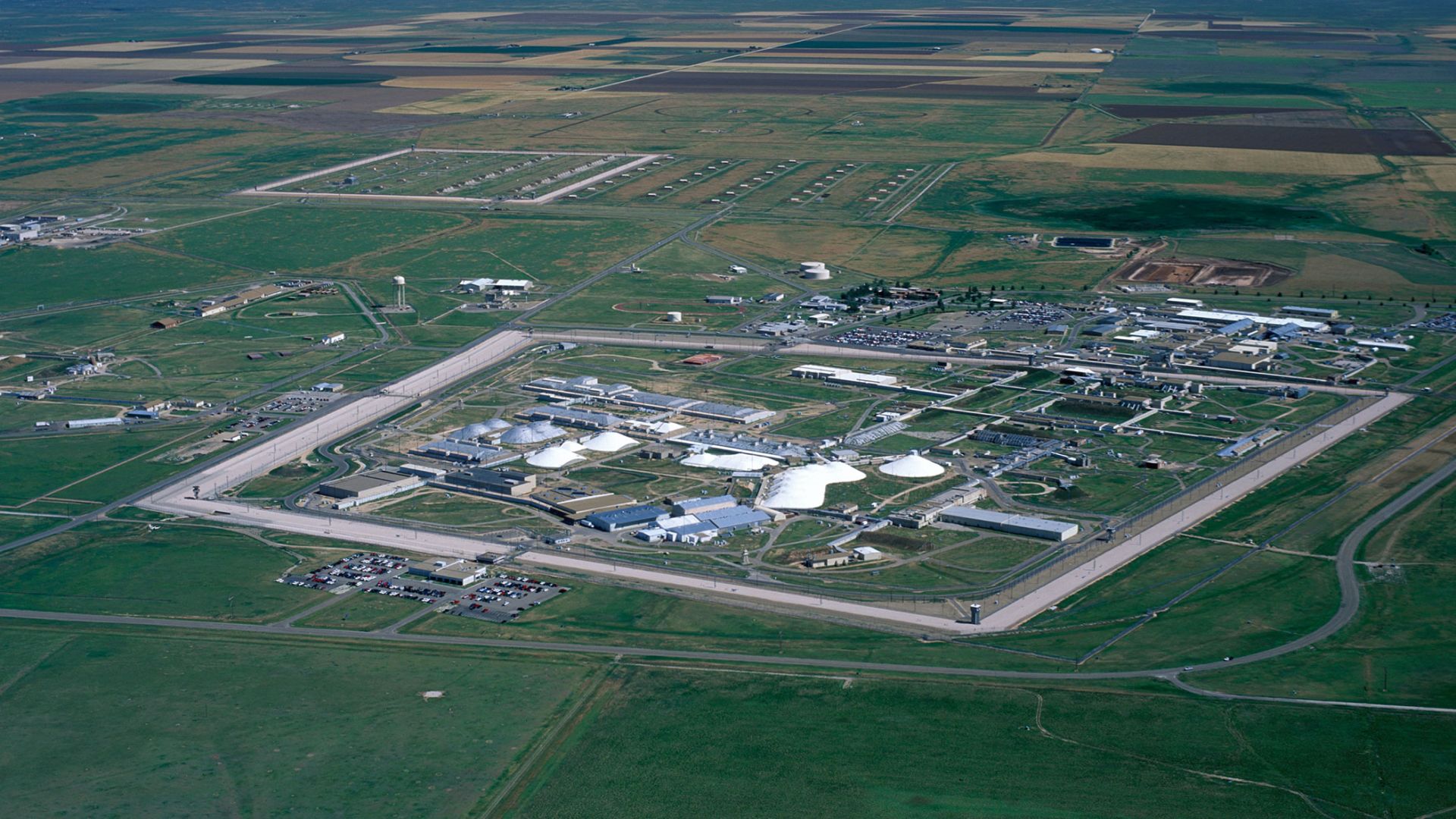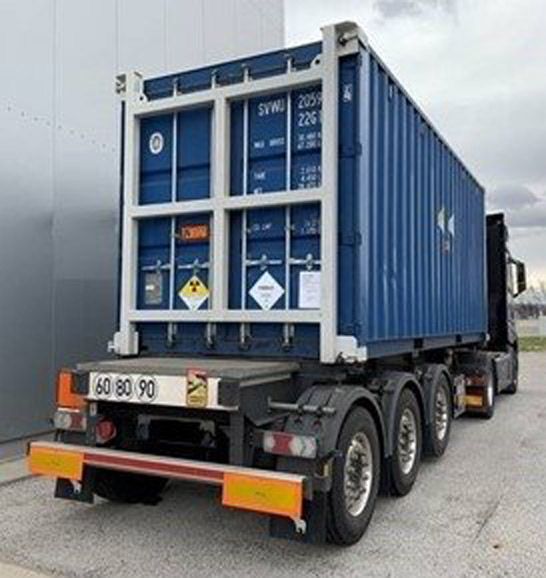The Y-12 site in Oak Ridge, Tenn. (Photo: Wikimedia Commons)
A fire broke out at the Y-12 National Security Complex in Oak Ridge, Tenn., earlier today. According to Y-12’s Facebook page, one of the site’s production buildings had a fire in a hood at approximately 9:15 a.m. Y-12 emergency services responded to the event and precautionary protective actions were initiated for employees who were in the vicinity of the incident and who were not involved in the emergency response.
A crane is used to remove equipment during a project to repurpose Building 226-F for an NNSA mission at the Savannah River Site. (Photo: DOE)
Work has begun to prepare the Savannah River Plutonium Processing Facility (SRPPF) at the Department of Energy’s Savannah River Site in South Carolina for its future national security mission: the manufacturing of plutonium pits for the National Nuclear Security Administration.
The first shipment of downblended surplus plutonium from SRS’s K Area leaves SRS. (Photo: DOE)
The Department of Energy’s National Nuclear Security Administration and Office of Environmental Management have completed the first shipment of downblended surplus plutonium transuranic (TRU) material from the K Area at the Savannah River Site in South Carolina to the Waste Isolation Pilot Plant in New Mexico.
A color-enhanced image of the inside of a NIF preamplifier support structure. (Image: LLNL/Damien Jemison)
On December 5, researchers at the National Ignition Facility (NIF) at Lawrence Livermore National Laboratory achieved fusion energy breakeven. It was a gain for stockpile stewardship that also—as headlines gushed prior to the Department of Energy’s December 13 announcement—boosted the prospects of inertial fusion energy (IFE). The timing of the landmark achievement may have been especially welcome to private fusion companies with inertial or hybrid magneto-inertial confinement concepts, because it occurred as the DOE was getting ready to consider applications for $50 million in funding for fusion pilot plant design work.
The target chamber of LLNL’s NIF, where 192 laser beams delivered more than 2 million joules of ultraviolet energy to a tiny fuel pellet to create fusion ignition on December 5, 2022.
It’s official: Early in the morning on December 5 at Lawrence Livermore National Laboratory’s National Ignition Facility (NIF), the laser-triggered implosion of a meticulously engineered capsule of deuterium and tritium about the size of a peppercorn yielded, for the first time on Earth, more energy from a fusion reaction than was delivered to the capsule. The input of 2.05 megajoules (MJ) to the target heated the diamond-shelled, spherical capsule to over 3 million degrees Celsius and yielded 3.15 MJ of fusion energy output. The achievement was announced earlier today by officials and scientists representing the Department of Energy and its National Nuclear Security Administration, the White House, and LLNL during a livestreamed event.
The electron accelerator that will be used for Mo-99 production at NorthStar’s newly completed facility in Wisconsin. (Photo: NNSA)
NorthStar Medical Radioisotopes has completed construction and all equipment installation at its new facility in Beloit, Wis., to produce the medical radioisotope molybdenum-99 without the use of high-enriched uranium, the Department of Energy’s National Nuclear Security Administration announced last week.
A view of the Savannah River Site’s H Area. (Photo: DOE)
The Department of Energy’s Office of Environmental Management (EM) announced on October 18 that it has begun the process of transferring primary authority of South Carolina’s Savannah River Site (SRS) to the National Nuclear Security Administration, with the transfer expected to be completed in 2025.
Crews make progress tearing down the former Criticality Experiment Laboratory. The teardown began this past summer after months of deactivation activities. (Photo: DOE)
Work crews at the Department of Energy’s Oak Ridge Site in Tennessee have successfully completed the demolition of the former Criticality Experiment Laboratory. Crews worked this past summer to bring down the dilapidated 1940s-era facility, also known as Building 9213.
The NNSA’s Savannah Blalock announces that the agency has reallocated $10 million to support peaceful uses. (Photo: NNSA)
The Department of Energy’s National Nuclear Security Administration has redirected about $10 million from the International Atomic Energy Agency’s low-enriched uranium fuel bank to efforts supporting the peaceful uses of nuclear technology and to fight cancer.
A view of Los Alamos National Laboratory. (Photo: LANL)
The National Nuclear Security Administration announced that, in compliance with the National Environmental Policy Act (NEPA), it intends to prepare a site-wide environmental impact statement (SWEIS) to analyze the potential environmental impacts for continuing operations of the Los Alamos National Laboratory for the next 15 years. The SWEIS will also analyze the environmental impacts of legacy waste remediation being done by the Department of Energy’s Office of Environmental Management at the site.
Demolition crews remove some of the auxiliary structures surrounding the main building of the Criticality Experiment Laboratory on the Oak Ridge Reservation. (Photo: DOE)
A contractor for the Department of Energy’s Office of Environmental Management (EM) started tearing down a 1940s-era facility in May at the Y-12 National Security Complex in Oak Ridge, Tenn. Demolition of the former Criticality Experiment Laboratory, also known as Building 9213, is the latest project by EM to address a large inventory of high-risk excess contaminated facilities at the Oak Ridge Reservation.
The Pantex Plant in Texas (Photo: NNSA)
The National Nuclear Security Administration announced last week that it is canceling its November 2020 contract solicitation for management and operation of the Pantex Plant and Y-12 National Security Complex and terminating the contract award announced in November 2021 for the two sites. The NNSA intends to hold two new competitions for separate contracts to manage each site.
The NNSA's ERICA initiative aims to provide resources to develop resiliency against climate-related obstacles like the 2021 shuttering of the Pantex
Plant due to the polar vortex. (Image: NNSA)
The Department of Energy’s National Nuclear Security Administration is establishing an Energy Resilient Infrastructure and Climate Adaptation (ERICA) initiative, which will help position it to deal with climate issues. In a recent press release, the NNSA noted that ERICA will help it to meet the requirements of federal legislature and executive orders, along with the DOE’s climate adaptation, energy resilience, and sustainability goals in support of the agency’s national security missions.
The initiative was outlined in President Biden’s fiscal year 2023 budget request for the DOE.
From left to right, Richmond County Technical Career Magnet School (Team 1) students Leila Cortez, Jaidyn Moore, and Tamea Dunnom and teacher Carla Biley won third place in Best Engineering Student Design at the WORCshop@AU event. They are joined by Rick Connolly, SRNS operations and maintenance director and WORCshop@AU judge (second from right).
Savannah River Nuclear Solutions (SRNS), the Department of Energy contractor responsible for the management and operations of the Savannah River Site in South Carolina, partnered with Augusta University to create WORCshop@AU, an education outreach opportunity to introduce local high school students to nuclear science careers by solving a real-world problem. The program concluded on December 9, when student teams presented their solutions during a friendly competition.
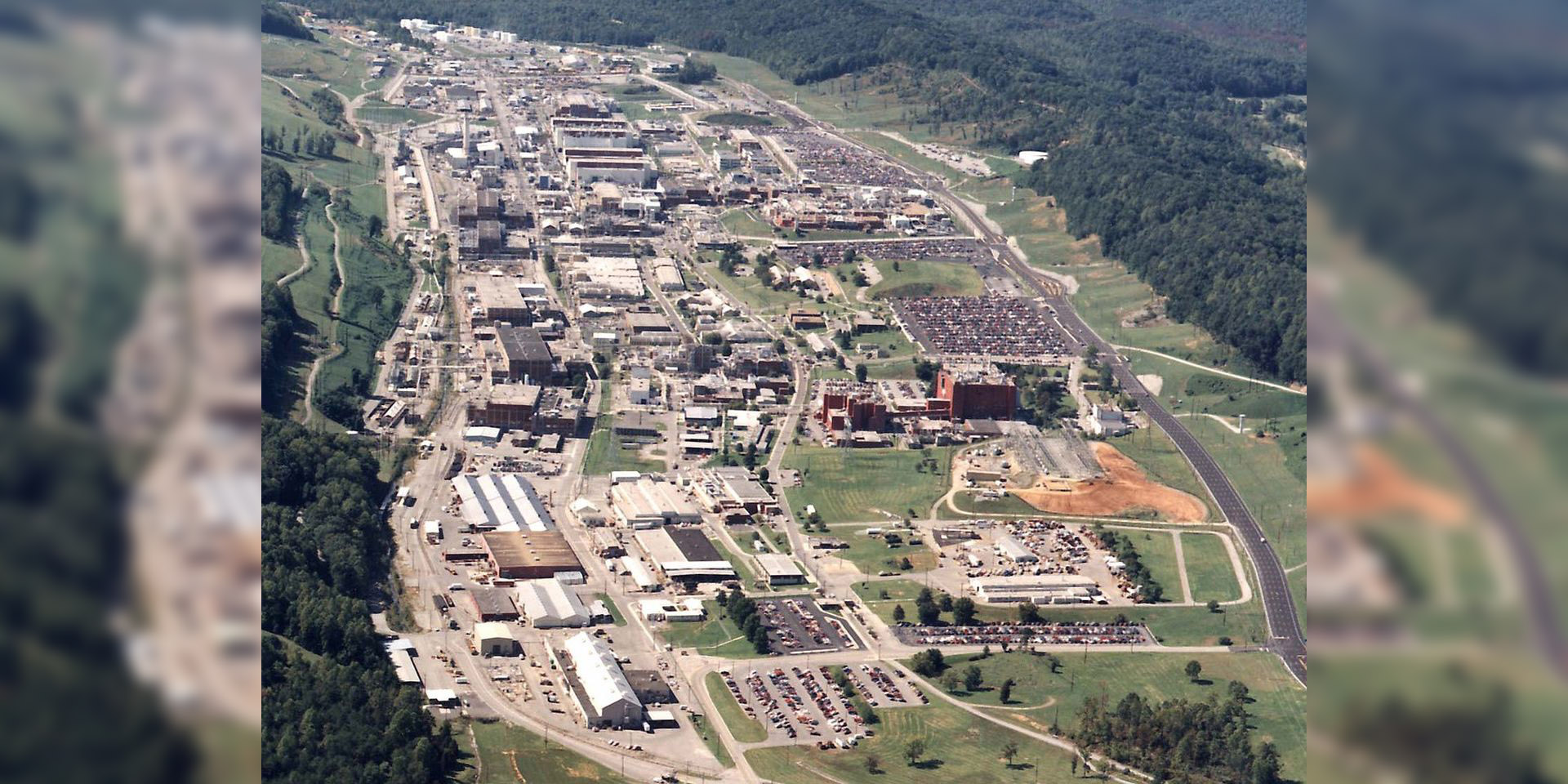



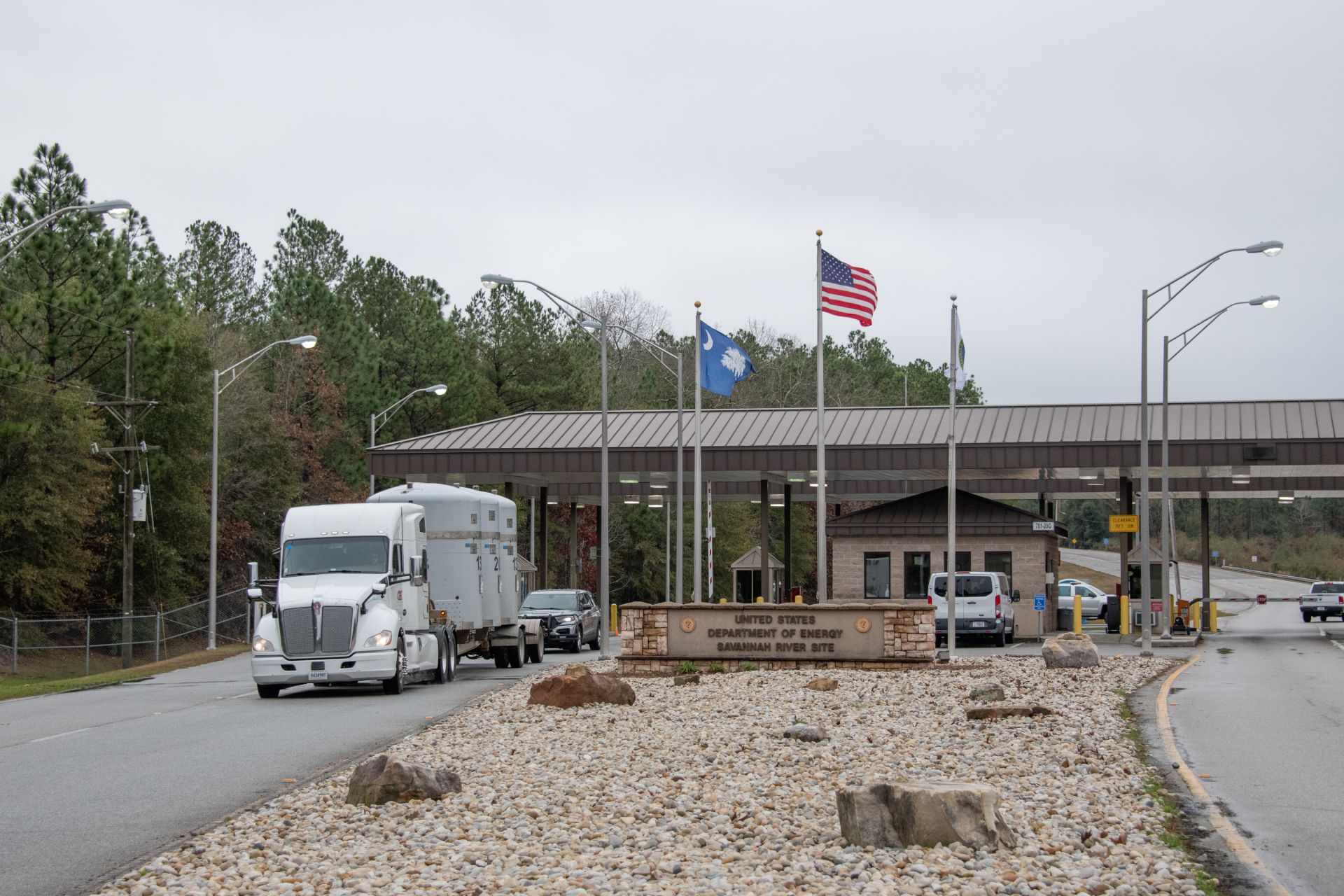
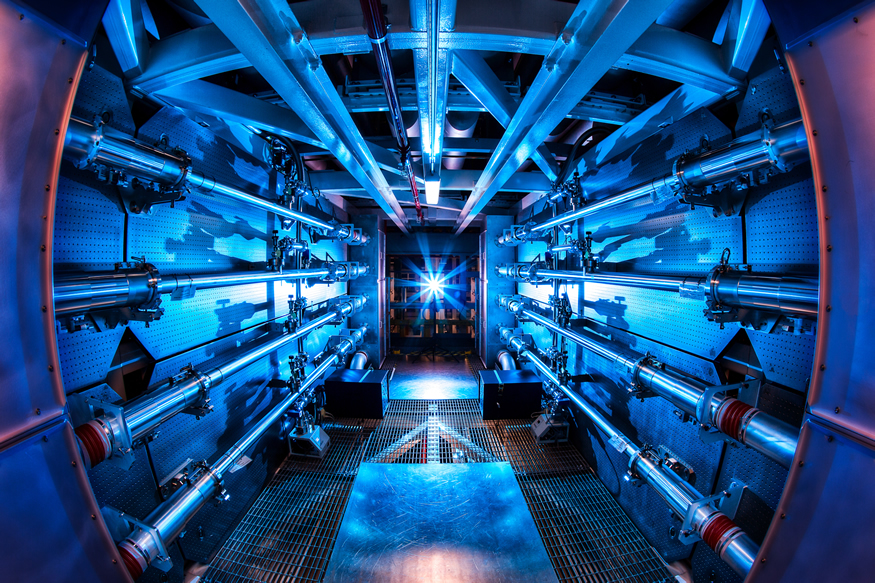

.png)
